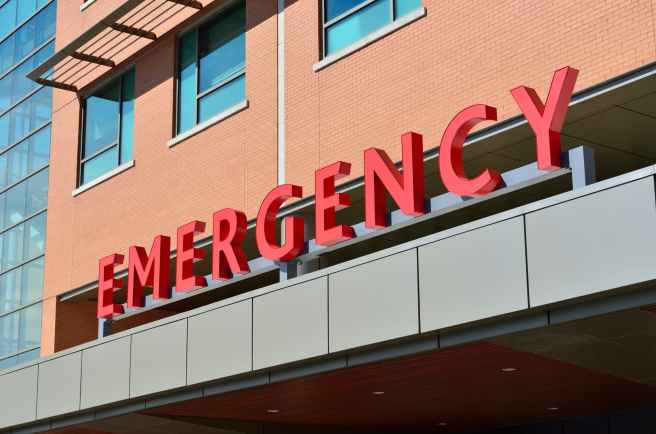 My last article for this journal looked at the role of the market and competition in the NHS in the UK. It concluded that, without access to accurate, unbiased and up to date information, patients cannot make effective decisions about their healthcare and the market cannot work. The NHS has made good progress in improving information available to patients through NHS Choices although further improvement is needed to realise the benefits of a market in the NHS.
My last article for this journal looked at the role of the market and competition in the NHS in the UK. It concluded that, without access to accurate, unbiased and up to date information, patients cannot make effective decisions about their healthcare and the market cannot work. The NHS has made good progress in improving information available to patients through NHS Choices although further improvement is needed to realise the benefits of a market in the NHS.
Private healthcare has existed in parallel to the NHS since the NHS came into effect in 1946. Perhaps, therefore, the NHS can learn from the private sector about creating an effective market based on high quality information. However, it would appear that this is not the case.
Intuitively, you would assume that there is a wealth of comparative information available to patients on the quality (and cost) of private healthcare. However, this has not traditionally been the case. In 2014, the Competition and Markets Authority undertook an inquiry into the private healthcare market which resulted in the Private Healthcare Market Investigation Order 2014. The investigation found that there was not the same volume and quality of information available about private healthcare as there was about the NHS. Consequently, the Authority made the “Private Healthcare Market Investigation Order” which requires private healthcare providers to submit information to the Private Healthcare Information Network (PHIN) on quality information, such as infection rates, and will eventually extend to information on cost. In May 2017, the PHIN published 3 performance measures covering 149 procedures at over 200 hospitals (https://www.phin.org.uk/home). Whilst the Nursing Times described this as a “significant step” this is still only 3 performance measures which represents a lot less information than is currently available about NHS provided services. Information on cost is even more difficult to find, although this does exist with http://www.privatehealth.co.uk and bestcarecompare.com leading the way.
So, there is not a great deal of information available about private healthcare quality and cost. So what? Common estimates suggest that only 8% to 12% of the population use private healthcare, so what has this got to do with the NHS?
Firstly, if there is no comparative information available to patients then market forces can not improve quality and lower cost. If effective price competition existed then prices would become lower. If prices were lower, then more patients, who currently use the NHS, would use private healthcare. This would cost the NHS less and would reduce waiting times for patients still using NHS services.
Secondly, the NHS is having to make very difficult decisions about rationing services. A lot of services are being deemed as not clinically effective and more and more patients are being turned away from the NHS for basic diagnostic tests. Providing lower cost private healthcare, by encouraging market forces, will make these tests and procedures available to a larger number of patients. More importantly, making private healthcare more affordable will reduce the financial pressure on the NHS which will reduce the need for further rationing in the future.
The NHS is becoming increasingly unaffordable. Limited information about private healthcare cost and quality allows private providers to charge more than market forces would dictate. By improving the quality of comparative information available to patients, costs can be lowered and more patients will choose to use private healthcare. This will free up resources for the NHS and will lead to lower
waiting times and reduced rationing. Hopefully organisations such as The Private Healthcare Information Network and bestcarecompare.com will make this a reality.
Mike Williams is Director of Analytics at iCaps Health Ltd


 The first time I was referred to hospital by a GP, the information I had available to me on the suspected diagnosis and the options available to me was practically non-existent. Due to the absence of any better information, I remember looking up the terms that the GP had used in a dictionary. This was only 20 years ago but it is easy to forget how far the information revolution has driven us in empowering patients and ultimately improving the quality of healthcare. When I was referred in the late 1990’s, I didn’t have a choice of hospital to go to, waiting times were excessive and outcomes were nowhere near as good as they are now. The monumental improvements that have been made are obviously partially due to the additional cash that was injected into the NHS following the publication of the NHS Plan. However, this is also partially due to the information revolution which has led to the empowerment of patients and has provided information on how to stay healthy as well as providing a choice to patients when it comes to their healthcare. It is too easy to forget how much the NHS has improved over the last 20 years and we should congratulate all the staff in the NHS for making this happen. However, the internet has also played a role in facilitating some of these improvements. We are lucky to have
The first time I was referred to hospital by a GP, the information I had available to me on the suspected diagnosis and the options available to me was practically non-existent. Due to the absence of any better information, I remember looking up the terms that the GP had used in a dictionary. This was only 20 years ago but it is easy to forget how far the information revolution has driven us in empowering patients and ultimately improving the quality of healthcare. When I was referred in the late 1990’s, I didn’t have a choice of hospital to go to, waiting times were excessive and outcomes were nowhere near as good as they are now. The monumental improvements that have been made are obviously partially due to the additional cash that was injected into the NHS following the publication of the NHS Plan. However, this is also partially due to the information revolution which has led to the empowerment of patients and has provided information on how to stay healthy as well as providing a choice to patients when it comes to their healthcare. It is too easy to forget how much the NHS has improved over the last 20 years and we should congratulate all the staff in the NHS for making this happen. However, the internet has also played a role in facilitating some of these improvements. We are lucky to have  In 1989 the white paper “Working for Patients” paved the way for the creation of the “internal market” in the NHS. Since then we have seen GP fundholding, the creation of Primary Care Groups/Trusts and the development of a payment system that funds hospitals based on the number of patients they see. The ongoing re-structuring and policy changes that have occurred since 1989 have left us with an internal market where Clinical Commissioning Groups (CCGs) purchase health care services from providers, including hospital trusts.
In 1989 the white paper “Working for Patients” paved the way for the creation of the “internal market” in the NHS. Since then we have seen GP fundholding, the creation of Primary Care Groups/Trusts and the development of a payment system that funds hospitals based on the number of patients they see. The ongoing re-structuring and policy changes that have occurred since 1989 have left us with an internal market where Clinical Commissioning Groups (CCGs) purchase health care services from providers, including hospital trusts.